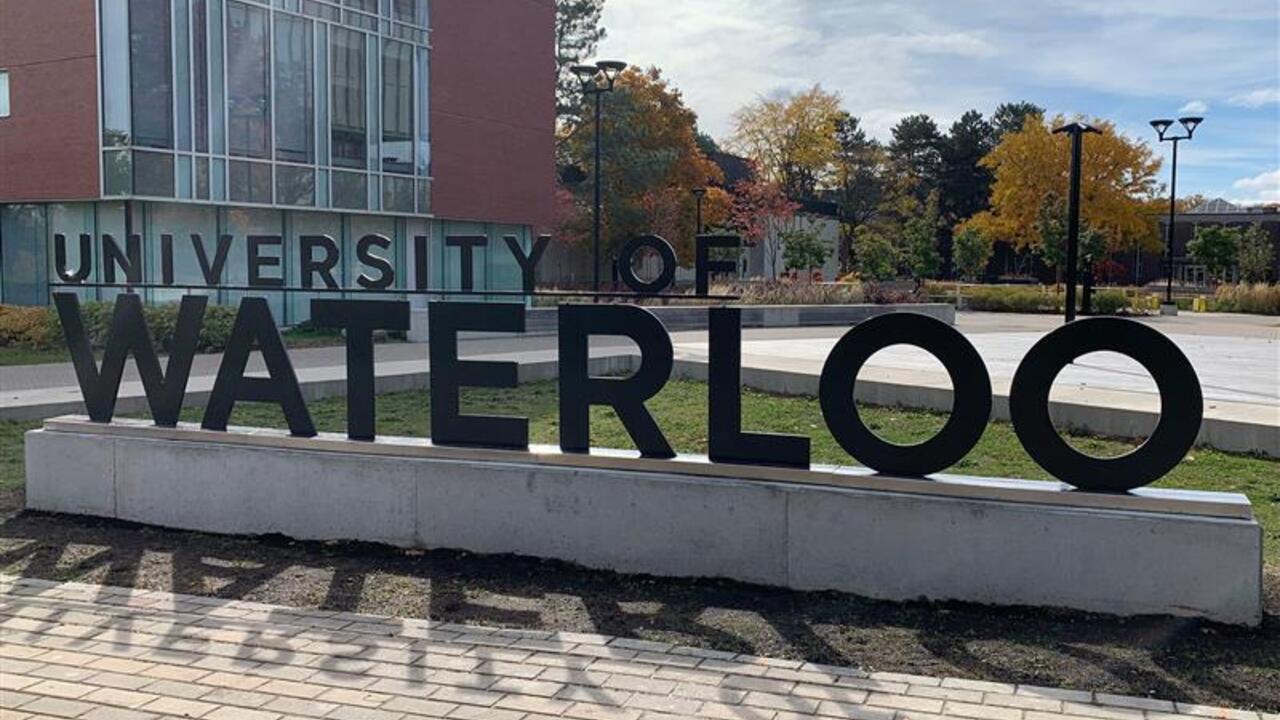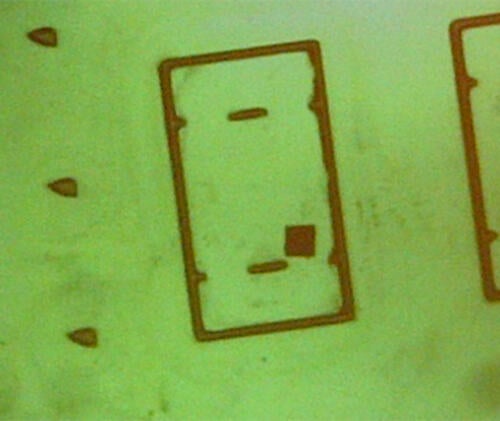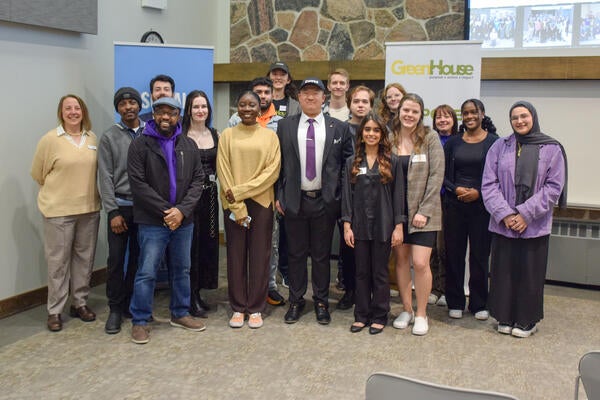
Waterloo students win big at microrobotics
A team of undergraduate students from the University of Waterloo has won a significant microrobotics competition.

A team of undergraduate students from the University of Waterloo has won a significant microrobotics competition.
By Media Relations
WATERLOO, Ont. (Friday, May 17, 2013) – A team of undergraduate students from the University of Waterloo has won a significant microrobotics competition, and they did it in less than one second.
The Mobile Microrobotics Challenge took place at the International Conference on Robotics and Automation in Karlsruhe, Germany. The Waterloo team won the Autonomous Mobility Challenge, where the microrobots must autonomously navigate a track in the shape of a figure eight.
"This winning team consists of engineering students who were supported by colleagues from arts and math. The fact that they worked together so well to win this competition speaks to the collaborative spirit and multidisciplinary approach we take at Waterloo,” said Feridun Hamdullahpur, president and vice-chancellor of Waterloo. “They surpassed graduate students and postdoctoral candidates from other top universities, which is indicative of their work ethic and high skill. I congratulate them on their victory."
The microrobots were 500 micrometres in size—less than the thickness of a credit card—and competed in an arena measuring 3.5 millimetres by 2 millimetres. Waterloo's team finished three runs with a winning average time of .33 seconds. Organizers set up a microscope over the tiny arena and projected the race onto a large screen so that spectators could see the action.
Matthew Maclean, a third-year student in software engineering, was the controller for the Waterloo team—much like being the driver for a racing team. He controlled the microrobot with computer code, and says precise movements are critical in order to avoid catastrophe.
"When you have something that small, if you are a few milliseconds too slow when controlling the robot, it could end up off the course at a distance 100 times its size," said Maclean. "We do lose the robots from time to time when testing because it's like trying to find a speck of dust."
The implications of this performance can lead to progressive leaps in the development of micro-scale applications including targeted drug delivery, minimally invasive surgery and advanced electronics manufacturing.
The Waterloo team consists of about 45 undergraduate students, and works under the University of Waterloo Nanorobotics Group, or UW_NRG. The students defeated six other teams from Canada, the United States, France and the Czech Republic. This is the second year a Waterloo team has won this competition.
A video of the Waterloo team's microrobot in action at the competition is available at http://www.youtube.com/watch?v=93cH4wOQaMI&feature=youtu.be
In just half a century, the University of Waterloo, located at the heart of Canada's technology hub, has become one of Canada's leading comprehensive universities with 35,000 full- and part-time students in undergraduate and graduate programs. Waterloo, as home to the world's largest post-secondary co-operative education program, embraces its connections to the world and encourages enterprising partnerships in learning, research and discovery. In the next decade, the university is committed to building a better future for Canada and the world by championing innovation and collaboration to create solutions relevant to the needs of today and tomorrow. For more information about Waterloo, please visit www.uwaterloo.ca.
-30-
Media Contact:
Pamela Smyth
Media Relations Officer
Communications & Public Affairs
University of Waterloo
519.888.4777
psmyth@uwaterloo.ca
www.uwaterloo.ca/news
Attention broadcasters: Waterloo has facilities to provide broadcast-quality audio and video feeds with a double-ender studio. Please contact Pamela Smyth at 519.888.4777 for more information.

Read more
GreenHouse awards more than $14,000 to five student founded ventures making an impact towards several UN Sustainable Development Goals

Read more
Waterloo alum, Mike Perkins, wins an Academy Award for breakthrough tech that brings a new level of detail to the big screen

Read more
Waterloo student develops an app to triage patient requests to enhance communication between hospital patients and their health-care providers
The University of Waterloo acknowledges that much of our work takes place on the traditional territory of the Neutral, Anishinaabeg and Haudenosaunee peoples. Our main campus is situated on the Haldimand Tract, the land granted to the Six Nations that includes six miles on each side of the Grand River. Our active work toward reconciliation takes place across our campuses through research, learning, teaching, and community building, and is co-ordinated within the Office of Indigenous Relations.